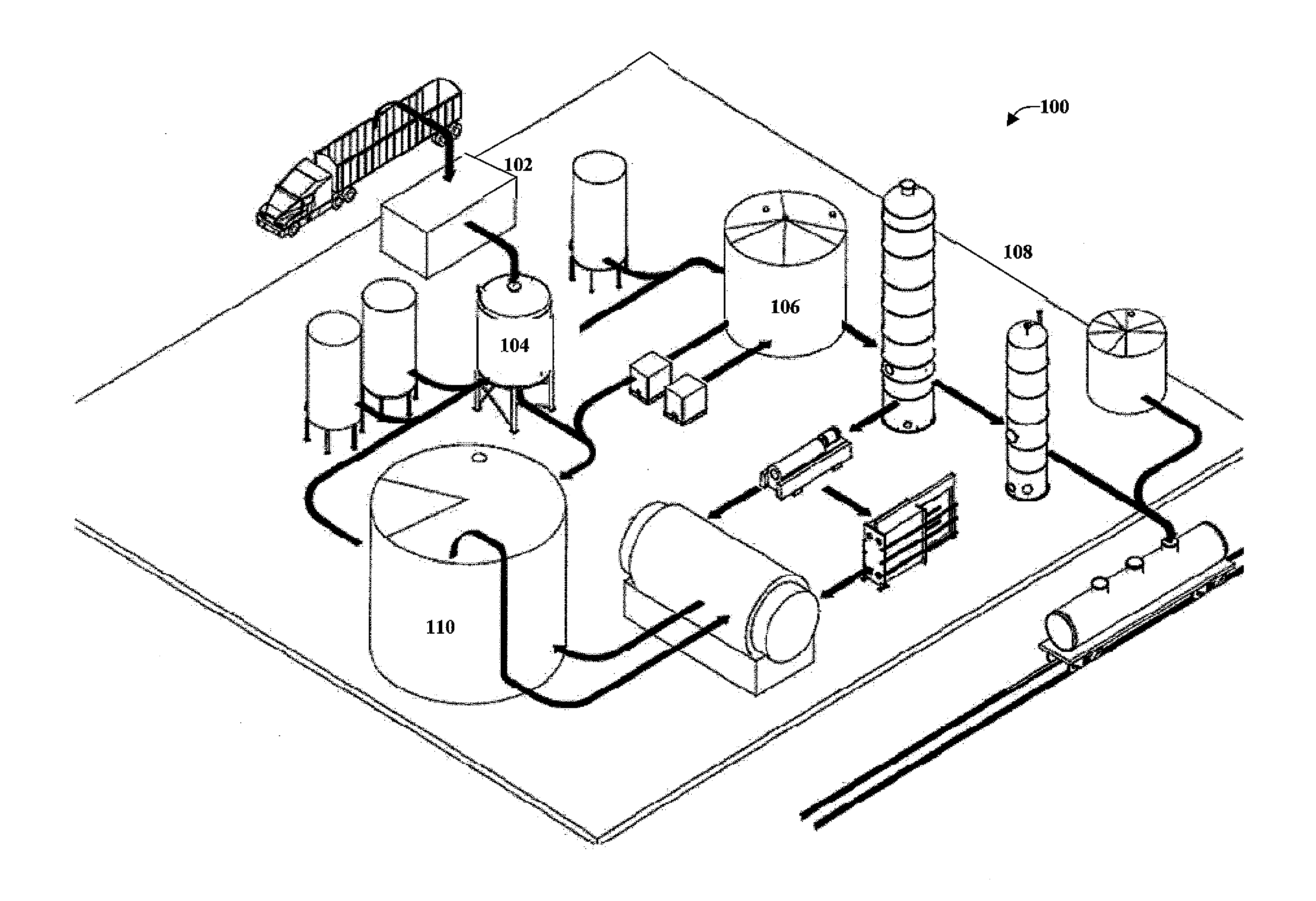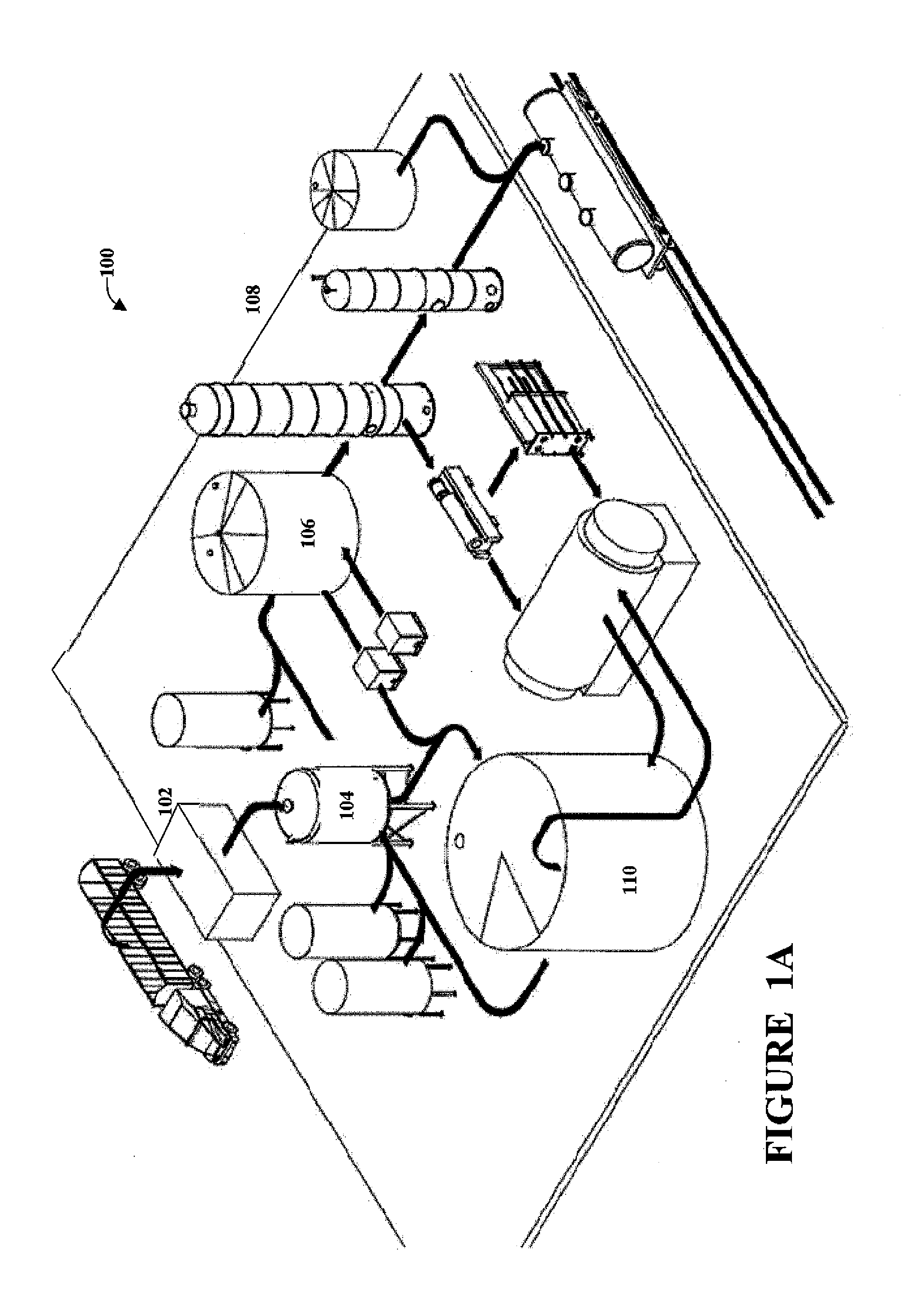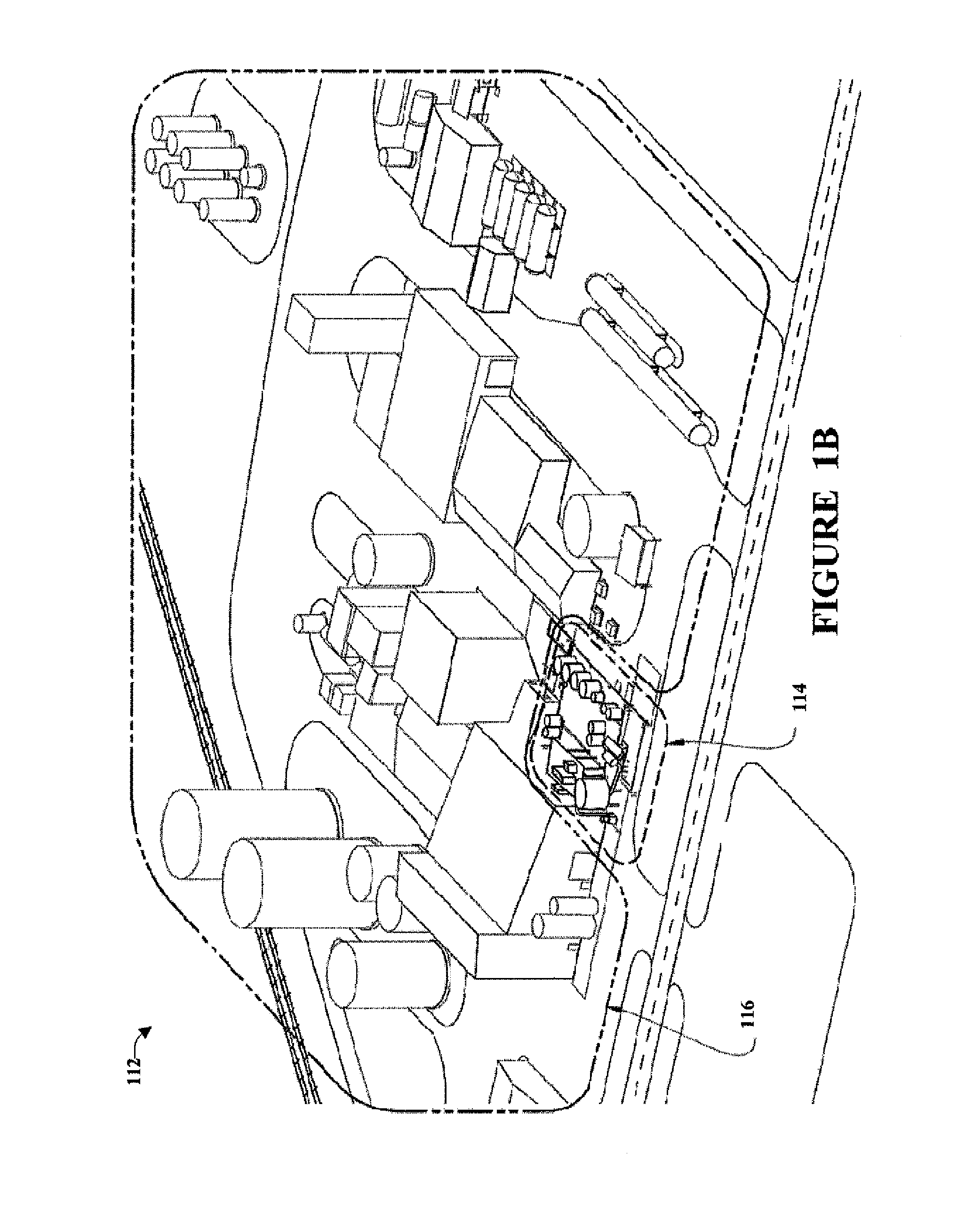Methods and systems for reducing the level of one or more impurities that are present in a pretreated cellulosic material and/or distillate
a technology of pretreatment and distillate, which is applied in the direction of biofuels, organic chemistry, fermentation solutions, etc., can solve the problems of limiting the downstream use of ethanol, ethanol to become more acidic, and the presence of diacetyl may be particularly problematic, so as to reduce the concentration of diacetyl
- Summary
- Abstract
- Description
- Claims
- Application Information
AI Technical Summary
Benefits of technology
Problems solved by technology
Method used
Image
Examples
example 1
[0069]The first example proceeded using a 7% H2O2 solution that was used for diacetyl mitigation during a batch distillation run. A known volume of cellulosic ethanol was heated to 60° C. then treated with 10% by volume of a 7% H2O2 solution. The ethanol was kept at 60° C. with constant stirring after the treatment and samples were taken for HPLC analysis following the treatment at 0 hour, 1 hour and 2 hour; then the sample was distilled. The results show a 63% reduction in diacetyl immediately following the treatment with a 91% reduction at one hour post treatment. The HPLC results are shown below in Table 1.
TABLE 1Reduc-AceticDi-tion ofH202 Mitigation - 10% H2O2AcidEthanolacetylDiacetyl(7% H2O2)ppm% v / vppmColor%100 proof2756123slightgreenMitigation-0 hr @60 C.2995345clear64Mitigation-1 hr @60 C.2035312clear91Mitigation-2 hr @60 C.16853NDclear100DistillateND100NDclear100Still Bottoms18147NDclear100
example 2
[0070]The second example proceeded using a 1.0N solution of sodium hydroxide (NaOH). A known volume of cellulosic ethanol was heated to 60° C., treated with 0.2% by volume of a 1.0N NaOH solution, and then distilled. Duplicate test results are shown in Table 2 below. The distillate and the still bottoms are within industry specifications.
TABLE 2NaOHMitigation-0.2%NaOh (1.0N)AceticSampleAcidEthanolDiacetylDescriptionppm% v / vppmColorpHpHeFeed-100 proof3450102slight4.3green0.2% NaOh6050NDclear11.4(1.0N)DistillateND101 33clear7.3Still Bottoms107 29NDorange-7.5brownFeed-100 proof2552100slight4.4green0.2% NaOH5352NDclear11.5(1.ON)DistillateND95 33clear8.3Still Bottoms119 30NDorange-8.1brown
example 3
[0071]A mitigation strategy to treat the cellulosic ethanol with a combination of H2O2 and NaOH was devised. Based on previous results for hydrogen peroxide and sodium hydroxide mitigation, several tests were conducted to determine the optimum dosage of both. Table 3 shows the results for a mitigation treatment of 1% by volume of a 7% H2O2 solution followed by 0.01% by volume of a 50% w / w NaOH solution. The results show that diacetyl is converted to acetic acid and the distillate color is clear.
TABLE 3H2O2 + NaOH Mitigation −1% H2O2 (7%) + 0.01%NaOH (50%)AceticSampleMassAcidEthanolDiacetylDescription(g)ppm% v / vppmColorpHFeed-100 proof 445183slight4.45green1% H2O2 (7%) +462.719551NDclear6.80.01% NaOH(50%)Distillate134.9ND101NDclear9.45Still Bottoms321.223726NDclear5.08
[0072]Several batch distillations were completed to determine alternate treatments that remove the diacetyl but maintains the ethanol in a more desirable pHe. The test results are displayed in Table 4 for the mitigation...
PUM
| Property | Measurement | Unit |
|---|---|---|
| Fraction | aaaaa | aaaaa |
| Fraction | aaaaa | aaaaa |
| Fraction | aaaaa | aaaaa |
Abstract
Description
Claims
Application Information
 Login to View More
Login to View More - R&D
- Intellectual Property
- Life Sciences
- Materials
- Tech Scout
- Unparalleled Data Quality
- Higher Quality Content
- 60% Fewer Hallucinations
Browse by: Latest US Patents, China's latest patents, Technical Efficacy Thesaurus, Application Domain, Technology Topic, Popular Technical Reports.
© 2025 PatSnap. All rights reserved.Legal|Privacy policy|Modern Slavery Act Transparency Statement|Sitemap|About US| Contact US: help@patsnap.com



